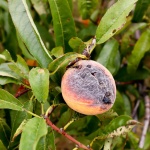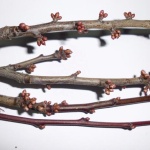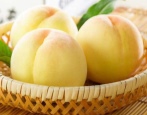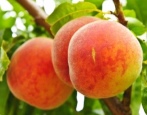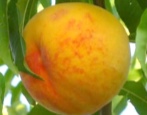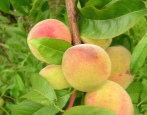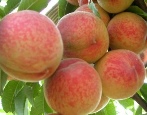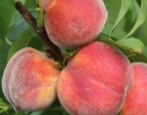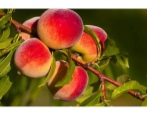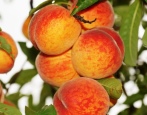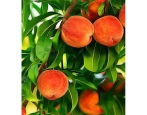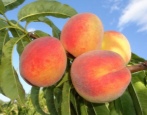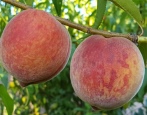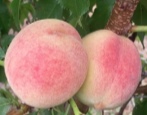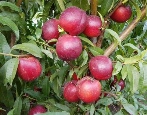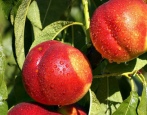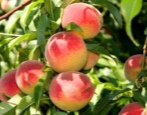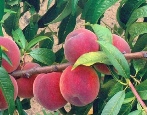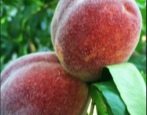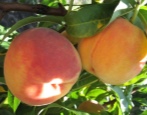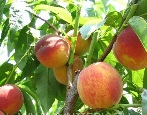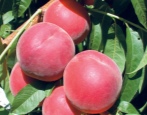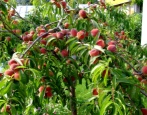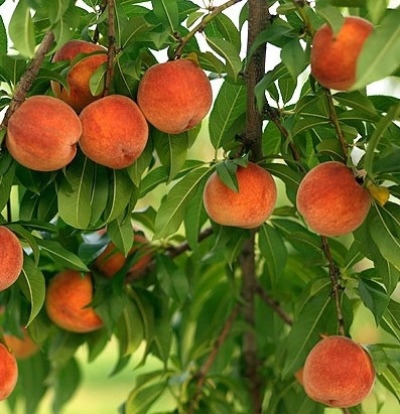
- Authors: I.N. Ryabov (Nikitsky Botanical Garden)
- Appeared when crossing: Rochester x Elberta
- Growth type: vigorous
- Ripening period: mid-season
- Self-fertility: self-fertile
- Appointment: dining room
- Yield: high
- Early maturity: enters the fruitful period for 3-4 years
- Growing regions: South of Ukraine, Autonomous Republic of Crimea, Krasnodar Territory
- Separability of the bone from the pulp: bad
Peach has been actively cultivated in Crimea since the early 1900s. In 1923, an Experimental Station for Southern Fruit Crops was established on the territory of the Nikitsky Botanical Garden. In the Soviet years and to this day, work is underway here to create highly adaptive peach varieties with resistance to negative temperatures, good yield and harmonious taste. One of the old, time-tested Crimean varieties is the Kremlin peach.
Breeding history
The Kremlin peach was bred in the Nikitsky Botanical Garden (GNBS) by the famous Soviet pomologist, doctor of agricultural sciences Ivan Nikolayevich Ryabov in the 50s of the XX century. The cultivar is a cross between the well-known American varieties Rochester and Elberta.
Description of the variety
Kremlevsky is a mid-season, self-fertile, winter-hardy, high-yielding variety for table purposes. Forms a strong, tall tree with a rapidly growing wide branching crown of an inverse conical shape. Gives tasty, large, but irregular in size, rounded peaches with velvety yellow-orange skin and red blush on the sides.
The variety has average resistance to prolonged drought, good immunity to a number of fruit diseases. Frost resistance makes it possible to grow this peach not only in the Crimea, Krasnodar Territory, the North Caucasus and southern regions of Ukraine, but also in the middle zone of the Russian Federation, although mainly in a covering method. Kremlin does not show record winter hardiness, especially for growth and flower buds.
Fruit characteristics
Fruits are round in shape, may be slightly oval. The weight of peaches is usually above average, but with a wide range of indicators: it ranges from 100 to 200 g. The peel with a velvet nap has a bright yellow color with an orange undertone and gradually turns red, turning into a dark red blurred blush at the stage of ripeness.
The dark yellow flesh is firm, medium-dense, fibrous and quite juicy. The stone is medium in size and separates well in very ripe fruits.
The keeping quality and transportability of the variety are not too high; it is recommended to harvest the crop fully ripe, process it and use it in a short time. If transportation is required, then only unripe fruits are suitable for it.
Taste qualities
The variety is declared as a table variety, intended for fresh consumption. But if you wish, you can start harvesting the harvest: prepare compote, jam or jam. The taste of the Kremlin is dessert, rich, sugary with a pleasant sourness. Blossom-peach aroma is pronounced.
Ripening and fruiting
The Kremlin begins to bear fruit quite early, already in the third year of the tree's life. In the 4th year, you can collect a full-fledged bountiful harvest.
According to its characteristics, this variety belongs to the mid-season. Fruiting occurs in the first or second decade of August.
Yield
Correct pruning of growth shoots and favorable climatic conditions will ensure high yields of up to 40 kg of peaches per tree on average. The Kremlin can bring such a crop irregularly, its abundance depends on the weather conditions of a particular year and the region of cultivation.
Self-fertility and the need for pollinators
The flowers of this peach are of the highly decorative rosy type. The tree blooms in the middle of the summer season, this period lasts about a week, it can take up to 10-12 days. The variety is self-fertile and does not require replanting of pollinating neighbors.
Growing and care
In the southern regions, seedlings are planted in autumn (in September - early October), and in more northern regions - in the spring. When planting a tree, a number of requirements should be taken into account:
choose a flat place or a small hill on the site so that there is no close occurrence of groundwater;
the peach should receive a sufficient amount of light, not be in the shade of other trees and buildings;
the tree must be protected from wind and drafts, which are dangerous in winter;
the fast-growing and spreading crown of the Kremlin peach requires space - about 3 m to other trees;
the soil should have good aeration and a medium acidity level;
Negatively affecting the health of peaches is the proximity of nightshades (potatoes, tomatoes, eggplant, peppers), as well as strawberries and melons.
For a tall variety Kremlevsky, competent sanitary and regulatory pruning is necessary. A large number of fruit buds are normalized. Long shoots are shortened for good yields. Each year, you need to prune the side branches into 2 buds, then leave the grown upper shoot as fruiting, and cut the lower branch of the growth short.
Otherwise, caring for this peach is not too difficult. As for watering, it should be regular, but moderate: waterlogging of the soil can cause fungal infections, and a long lack of water in a dry summer will affect the harvest.
The variety responds gratefully to feeding, especially in the first 2-3 years. When planting, organic matter and superphosphate are introduced; in the spring, nitrogen fertilizers are added for the growth of shoots. Intensive growth of fruits is stimulated by a potassium supplement, and in the fall the near-stem soil is dug up and fertilized with a phosphorus-potassium complex, green manure, and humus.
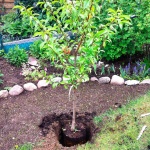
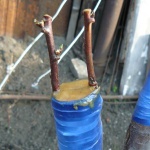
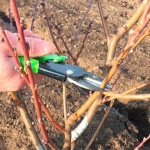
Frost resistance and the need for shelter
Kremlin shows good adaptability to growing in different climatic zones and temperature extremes, firmly tolerates return spring frosts down to minus 6-7 ° C. The variety is grown in private gardens in the middle zone of the Russian Federation, although its winter hardiness is not the highest: wood can withstand frosts down to -27 ° C and recover from them, but fruit buds can freeze out already at -13 ° C.
If the region is accustomed to severe winter frosts, then the tree is covered in autumn: the trunk circle is mulched, a frame made of slats is prepared around the trunk, the crown is bent down and tied, the entire structure is covered with burlap or agrofibre. In the case of the Kremlin, this process is complicated by the height of the tree (up to 4 m) and the spreading of the crown.
Disease and pest resistance
The variety resists disease quite well and is rarely affected by such a common ailment of stone fruits as leaf curl. It is also resistant to infection by the fungus clasterosporium. Powdery mildew infection is possible, and it requires quick and complete removal of affected branches and leaves.
The Kremlin can be exposed to pests, but with sanitary pruning, soil mulching and preventive spraying, this can be avoided or the damage caused by insects can be minimized.
